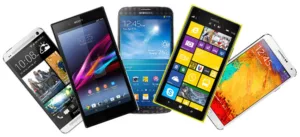A survey by Gartner has found that 17% of consumers in mature markets intend to buy a tablet in the next 12 months. 19,000 consumers were surveyed in early summer, across the UK, USA, China, France, Brazil and India.
Although apps, rather than hardware, drive tablet adoption, most apps work well with first- and second-generation devices. Because the OS can be upgraded for free, as well, users do not feel compelled to upgrade their devices, said Gartner’s Meike Escherich. “Users are less interested in the hardware and more interested in the applications and how devices using the cloud can interact with each other”, she added.
Tablet penetration has now passed 66% in the USA, with more than 25% of households owning two or more tablets. This is limiting the adoption of new devices. Escherich said, “Unless new compelling innovation or incentives to upgrade tablets are created, the churn of the mature installed base will continue to fall… The worst-case scenario is that many tablet users will never upgrade or buy a new tablet as phablets and/or two-in-one convertible PCs (both with larger screen) envelop the benefits of a tablet. This scenario would result in real household penetration for tablets falling under 40% in mature markets”.
Tablet penetration is lower in emerging markets, and filled with lower-cost models. Tablets need to complement smartphones in these regions; however, WiFi availability is limited, and cellular tablets are as expensive as entry-level phablets.
Gartner expects smartphone demand to split into two screen sizes: sub-5″, and 5.5″+ (phablets). Consumers will choose between them based on their device preferences and lifestyle. Some will choose phablets to avoid buying two devices, for instance.
Overall findings by Gartner show that almost half (48%) of respondents do not want to replace a device until they absolutely must. The purchasing process has become more complex, and consumers must prioritise which device is most important to them.
About half of respondents plan to stay with their current form factor, especially desktop (65%) and standard laptop (46%) owners. However, the survey also showed that consumers are increasingly uncertain what device should replace their existing one, which points to their needs not being clearly met by current product offers.
Hybrid PCs are a new opportunity for vendors, said Escherich, with demand coming from owners of both tablets and traditional laptops. As well as a longer battery life and faster boot times than a standard laptop, these devices also have a keyboard to raise productivity past that of tablets.
Analyst Comment
I will soon be in the market for a new phone, and I agree with Gartner’s conclusions – there is no device that obviously meets my needs. I expect performance, but also want a phone that will fit in my pocket, and today’s flagships are all well past 5″. The ‘mini’ versions inevitably sacrifice speed, battery life or other specifications. (TA)

